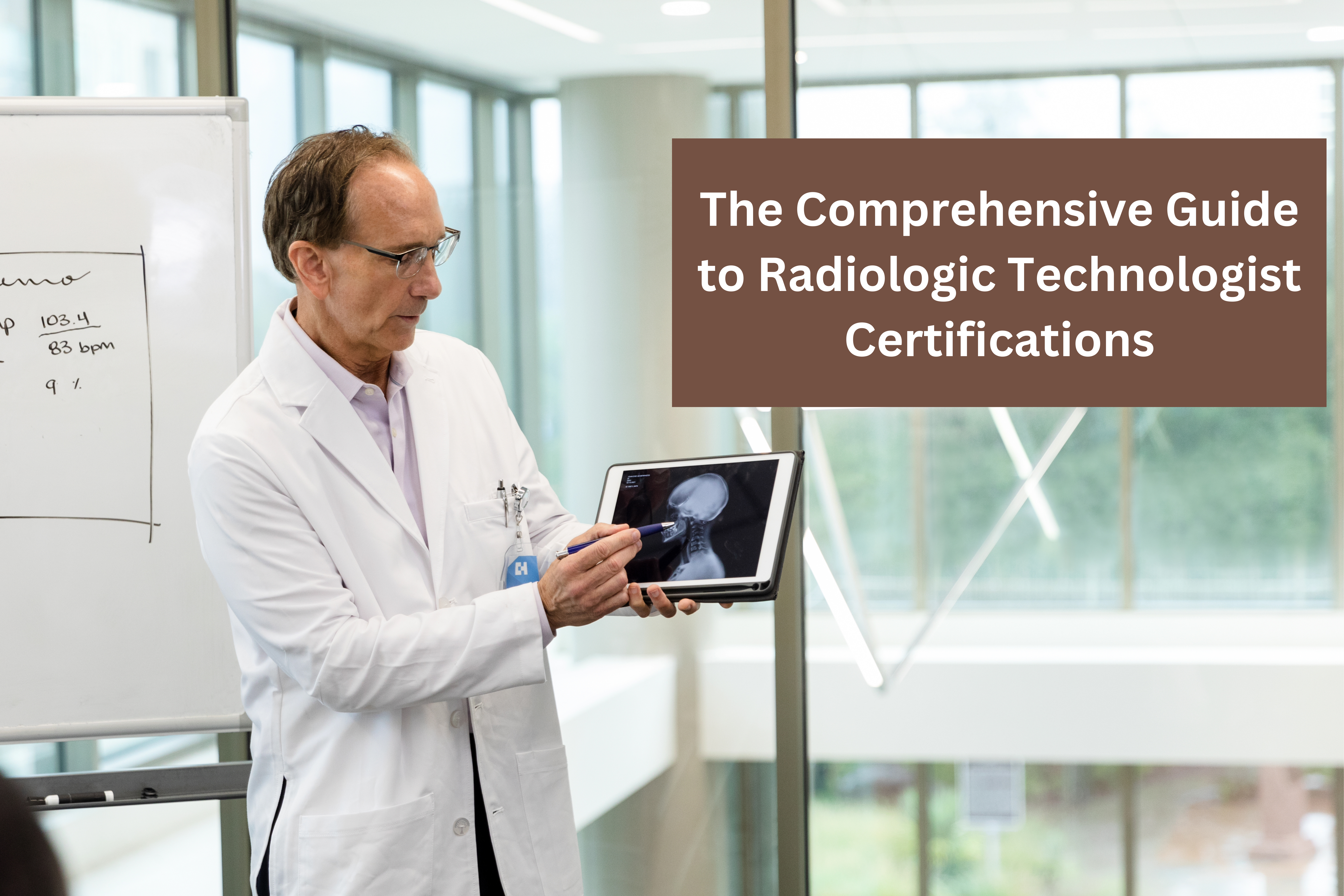Radiology Technologists, commonly known as Radiographers or X-ray technicians, play a pivotal role in the medical industry. Their expertise allows them to capture high-resolution images for accurate diagnosis and medical interventions.
So, a significant step for these professionals is becoming a Registered Radiologic Technologist R.T. (R), signifying competence in using X-ray technology safely and proficiently.
Understanding the Core Certifying Body: ARRT
The American Registry of Radiologic Technologists (ARRT) is the principal certifying body for radiology technologists. Moreover, Their role ensures professionals have achieved the competence and proficiency levels required by hospitals, imaging centers, and other healthcare facilities.
Certificate vs. Certification
- Certificate: This is issued by educational establishments, marking the successful completion of a specific program.
- Certification: Offered by trade associations, this reflects an individual’s achievement in meeting specific professional criteria, usually including an examination.
A Deep Dive into ARRT Primary Certifications
ARRT Primary Credentials cover foundational aspects essential for early career radiologists. These credentials include:
- Registered Radiologic Technologist R.T. (R)
- Nuclear Medicine Technologist (N)
- Radiation Therapy (T)
- Sonography (S)
- Vascular Sonography (VS)
- Magnetic Resonance Imaging (MRI)
Acquiring these credentials necessitates an associate degree or higher from an ARRT-approved program. Further, primarily computer-based, the certification exam encompasses patient care, safety, image creation, and specific procedures.
Exploring ARRT Post-primary Certifications
For those seeking advanced specializations, ARRT Post-primary Credentials come into play:
- Bone Densitometry (BD)
- Breast Sonography (BS)
- Cardiac Interventional Radiography (CI)
- Computed Tomography (CT)
- Mammography (M)
- Vascular Interventional Radiography (VI)
Meeting prerequisites in administrative, educational, and clinical arenas is paramount. Moreover, A significant aspect of this advanced certification is accruing the relevant experience and continued learning, showcased through continuing education credits and documented clinical procedures.
ARRT’s Commitment to Continued Learning
ARRT emphasizes the significance of continued learning. Certified professionals are required to complete 24 hours of continued education biennially. Further, This can be achieved through online classes, lectures, workshops, or other training modules endorsed by reputable professional organizations.
Diversifying with Additional Certification Boards
Apart from ARRT, the American Registry for Diagnostic Medical Sonography (ARDMS) and Nuclear Medicine Technology Certification Board (NMTCB) also offer specialized certifications. Moreover, These include midwife sonography, nuclear medicine, computed tomography, and radiation safety.
High-Demand Certifications in Radiology
Certain certifications witness a higher demand owing to their specialized nature. This includes:
- Nuclear Medicine (N)
- Interventional Radiography
- Mammography (M)
These are areas where professionals can find enhanced job prospects, making them prime choices for career advancements.
Choosing the Right Certification Pathway
Radiologists must be strategic in picking their certifications. Always consider state licensure requirements, intended work location, as well as how certain certifications can complement others. Additionally, understanding prerequisites for post-primary credentials and seeking certifications in high-demand areas can significantly impact career trajectories.
The Role of Certifications in Career Advancement
In an ever-evolving medical industry, multi-certified radiographers have a distinct advantage. Not only does it make them attractive to potential employers, but it also positions them for leadership roles, specialized job profiles, as well as higher remunerations. Further, Many radiography programs now facilitate students to prepare for multiple certifications, ensuring they’re industry-ready from day one.
Final Thoughts
With the rapid advancements in medical imaging technology, the role of radiologists has never been more critical. As they stride ahead in their career, arming themselves with multiple certifications ensures they remain relevant and paves the way for broader professional horizons.


